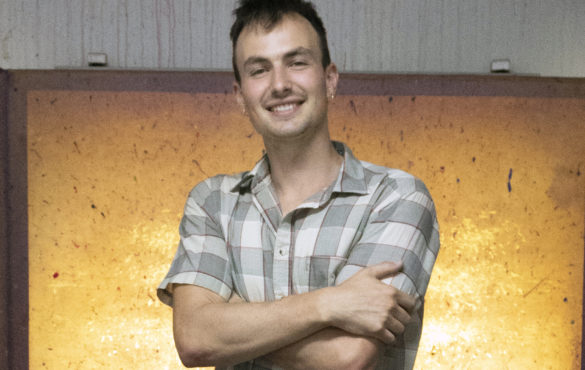Ben Garbus is an artist who hails from Western Massachusetts, but is currently living and working in Chicago, IL. He received a BA in Studio Art with a minor in Art History from Oberlin College in 2017. Garbus was a Studio Fellow with Spudnik Press in 2017-18. His practice consists of creating thought provoking, humorous images of everyday mundaneness through painting, printmaking, and sculpture.
Emma Punch: Tell us a little bit about yourself and what you do.
Ben Garbus: After finishing my undergrad I moved to Chicago and have been here for a year. During this this time, I’ve worked in a special education school, did some freelance art handling, and worked events for a photography company. I’ve learned many non-academic lessons this year, and that’s given me a lot of content for my art practice. I’ll reach some conclusion after participating in ordinary routines like when I go to work, come home, go to the supermarket, and generally relate to other people. My text work is the result of all those experiences and exchanges. Ideas get stuck in my head, and when I write my thoughts down, it helps me process them. Making prints or paintings from those notes can push the process even further. It helps me understand how I think, which helps me understand the context I live in. When I wrote my project statement for the Spudnik Studio Fellowship I was trying to theorize something that now comes more naturally for me, which is to use art to describe the ideas that might arise through ordinary circumstances. That idea seemed vague then, but for some reason, I get it now.
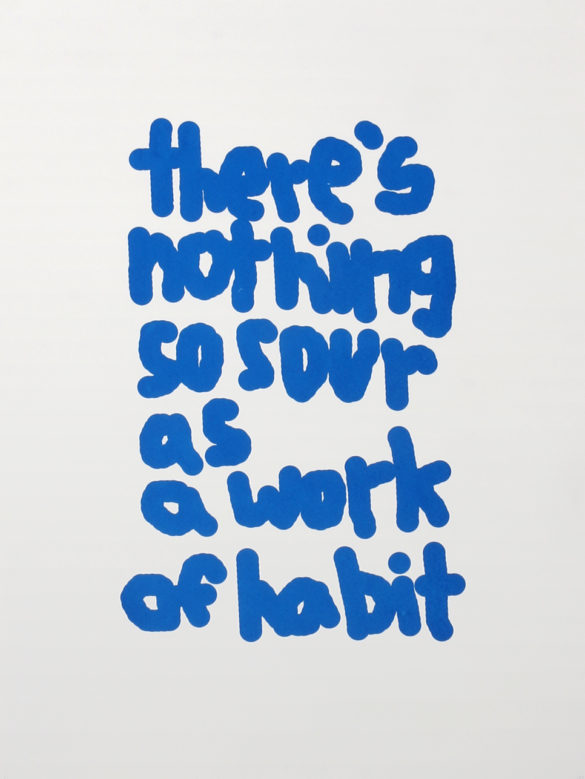
Ben Garbus, There’s Nothing So Sour As A Work Of Habit, 2018.
EP: In your fellowship project statement you talk about using banal phraseology in your work, how do you choose or come up with the phrases?
BG: I write notes on my iphone, mostly, and then I workshop them. I’m interested in cliches and jokes because they are often assumed as neutral, but I think there are underlying causes for this. As an artist, what you choose to latch onto can have an effect on people. It can get them to reconsider things they might otherwise overlooked. I reference cliches and jokes because they have a lot of content, but have lost their meaning. There’s a little bit of truth in every joke. Early in my practice, I was trying to directly use subjects that already exist, like a close reading of found objects or ideas. However, I wanted to shift into something that involved more writing rather than appropriation, and that gave me agency to interact with my subject matter, which seemed more creative or productive. So now I’m trying to write in the format of cliches or jokes to say something new, riffing on a given point of reference to get people to rethink it.
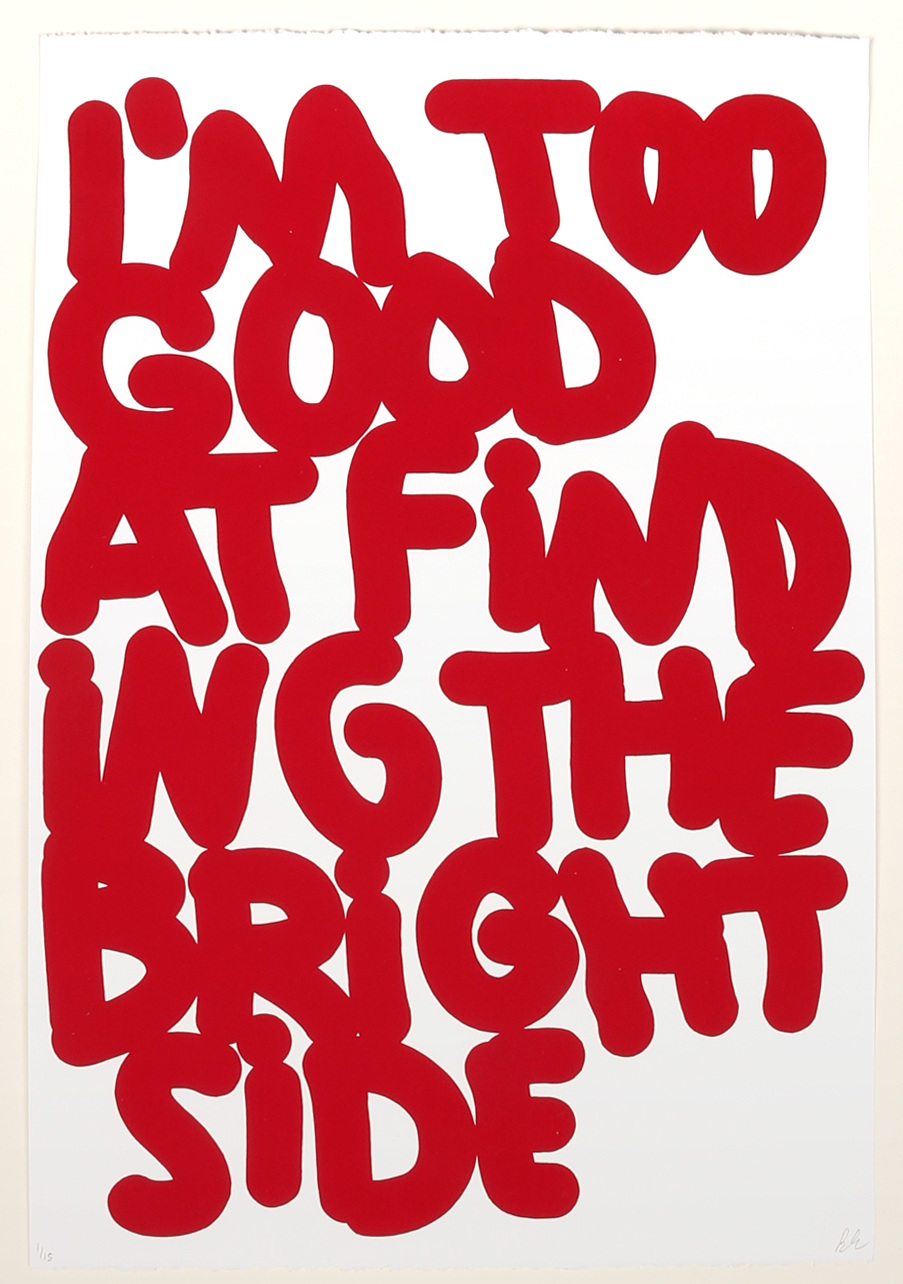
Ben Garbus, Optimist’s Complaint, 2018.
EP: So that’s why you came up with your own phrases?
BG: Yeah, I try to work around a preexisting concept or phrase. There is a Jenny Holzer quote that goes, “to write a quality cliché you have to come up with something new.” The way she writes is concise and she doesn’t waste words. All of her writing sits so naturally on the tongue, you don’t have to question her truisms, even though you’ve never read them before, and they are really direct. That’s super affective to see. You can engage people by tapping into their affinity for consuming language and art, and if you make something that is a little bit off within that, it can change how they think. But I’m not as good as her. I take a shortcut in my writing by riffing on existing turns of phrase, like what you might see on a poster at the doctor’s office, but rearranged. Creating something completely new asks questions of how ordinary phrases get to be ordinary. I think writing on the edge of what already exists is another way to do that, and it’s a little easier for me at this point. It can be funnier, too.
EP: What kinds of things and/or artists are influencing your work right now?
BG: I’m influenced by people who work with the visual culture around them, both in the popular realm and underground. I always saw Mike Kelley as having done that for some parts of American visuality. Jeremy Deller seemed to do that in England. I like them both. Jenny Holzer is of course an influence. There’s a sense of realism in those three artists’ work. They connect their lives to others through art and speak to a lot of different kinds of people. They imagine the role of artists as producers of new visual culture in conversation with what already exists, explicating some social narrative for their viewers. They have a good sense of the world in which they live, and it doesn’t take much effort to feel it in their stuff. They are obviously what I might strive towards; I mean they are monumental artists. Right now my work is smaller in scale and more personal than public. However, I try not to be influenced by artists as much as what I am making things about.
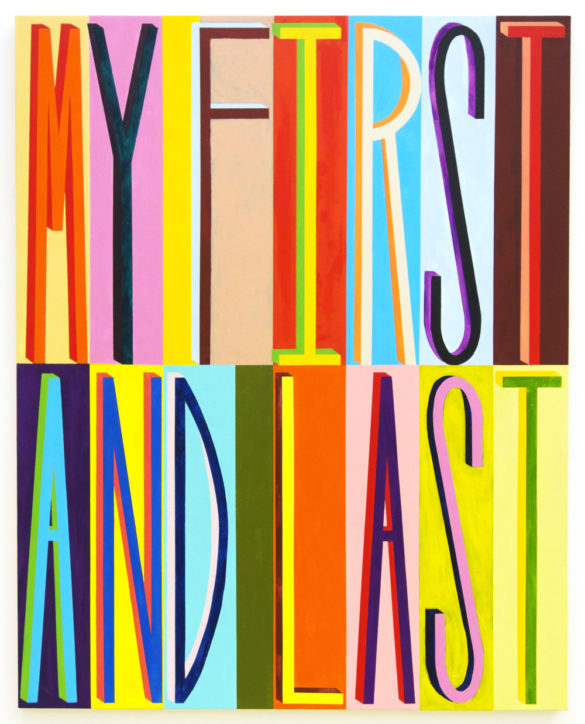
Ben Garbus, Existential Text Painting, 2017.
EP: I feel like your work is very David Shrigley-esque.
BG: Yeah! I think he’s funny. I think we share a dry sense of humor in our work, and I like his sculptures, particularly his life model projects. I do have a background in comics and that was how I first started drawing, but going to school for art and studying contemporary art history shook me into keeping my disciplines separate, or at least framing a single artwork into a more sturdy kind of category. I aspire to break that habit, but right now what I like about text art is that it combines word and image into one discipline. It’s about an image of a word, which is an interesting idea to me, more so than a word next to an image. Having words and images together only emphasizes their differences, which can reinforce barriers between disciplines. I only mention it because David Shrigley makes a lot of image and word paintings. So it’s not that I want to keep disciplines separate, it’s that I don’t want to pretend that putting them together alleviates their difference. I don’t think Shrigley purports to do that, but I want people to see that the walls between categories are malleable. An image of a word actually subverts the idea that they are two different things.
EP: Why is it important to you to incorporate sculpture into your printmaking and painting practice?
BG: Sculpture can be good for helping people consider the whole work of art as part of its meaning, as opposed to just what it depicts. If you’re thinking about a print in a sculptural way then you add to its meaning a consideration of the way it was made, the paper it occupies, in what context it exists. There’s more to see. All the decisions that go into a work of art can be interpreted. With so many decisions at stake, I think making sculpture helped me to be more intentional about why I make anything. So if I’m going to make a painting, part of its conception has to be the idea that it’s a painting, or whatever that means. If you ignore that premise and only think about what the painting is of, rather than what it means as an object, you can miss a lot. Maybe that happens regardless, but if I think of myself as a painter, it’s never only about what I paint. It’s also about the making of a painting. I’ve made a painting and called it a sculpture and vice versa.
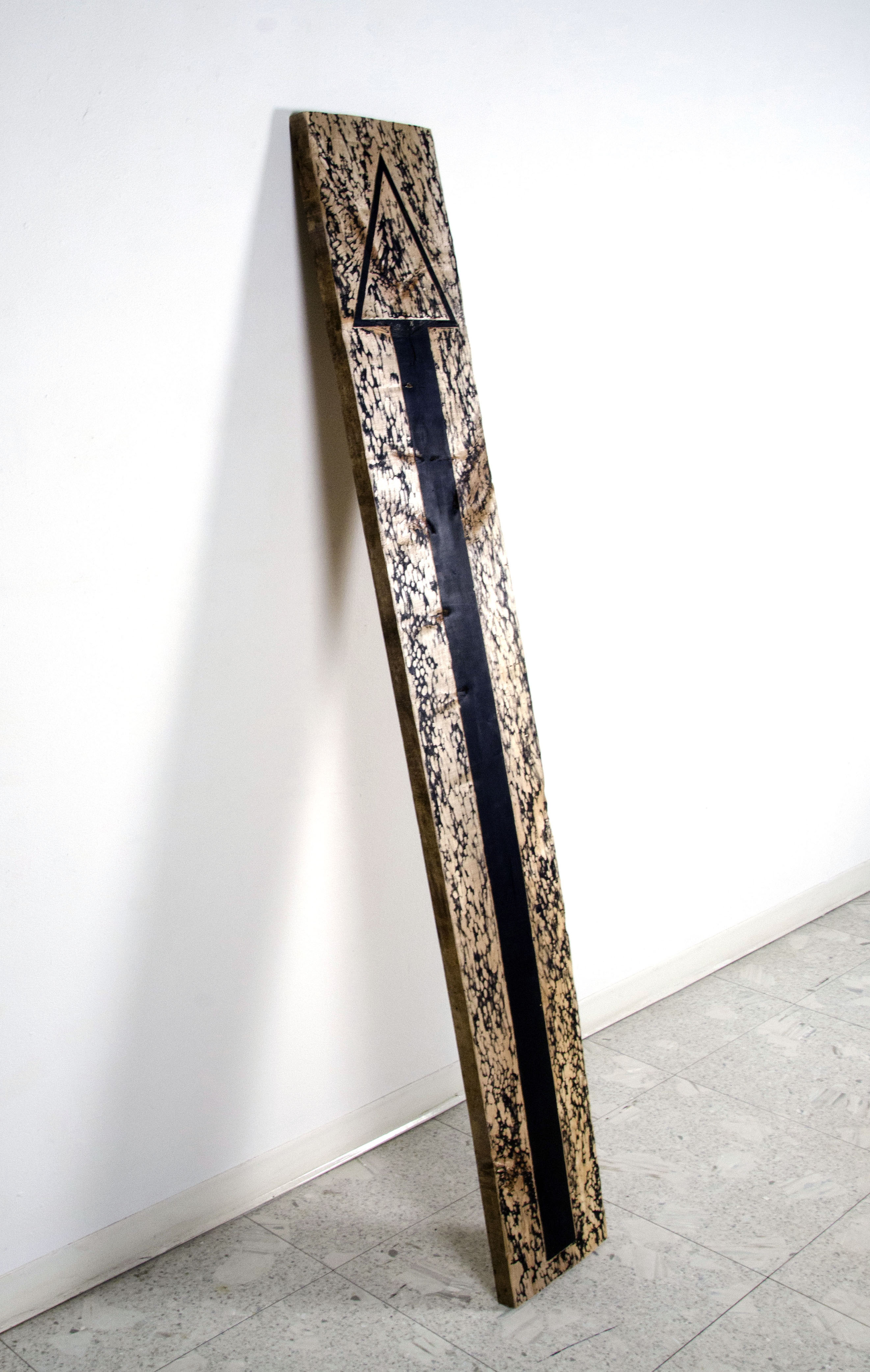
Ben Garbus, This Side Up, 2017.
EP: What is your favorite medium to work in right now and why?
BG: I’ve been drawing and sometimes that leads to an idea, which will become something, but I never really show my drawings.
EP: What are your drawings usually of?
BG: They’re a lot of cartoons and intuitive things I don’t want to put out there. I don’t feel obligated to let everything I make roam. If I’m going to put something out to the public or consider it my work, I have to challenge it before I can let it go. Maybe I’ll grow out of that. While they help me pass the time, thoughtless drawings aren’t what I want to contribute to the world. I’m torn about what I want my aesthetic to be or how to make categories of art for myself, but I do know that I want my work to be thoughtful and careful. I like people, whether or not they’re artists, who do a lot of different things, and you can tell they did it because of the sense of humor in it or a specific logic to it or it shows a particular drive. I don’t like that some artists have to market themselves based on how the work looks.
EP: Is aesthetic really important to you in your work?
BG: Visually, I don’t like to do the same thing over and over again. I’m not very perseverant in that way. I like inventing. It can be good to follow through with a certain image or process, but I think it’s more productive to contribute a way of thinking to the world than to manufacture the same aesthetic over and over. That might be my short attention span talking, but it also has to do with what I value. Although, maybe those influence each other. I am falling into the habit of making work in a consistent style, which could be an improvement for me in the long run, but right now it only contradicts how I’ve figured out to best rationalize my inconsistency.
EP: What is something you want people to take away when they see your art?
BG: I want people to chuckle but also to think more about everyday life and to use art as a means to tap into their own thoughtfulness or mindfulness. Most art you could say is functional in making people content with being alive, or as being life affirming, and I do want my art to be life affirming, but that’s kind of a dark thing to sell to your viewers and a low standard to set for yourself. For me it’s important to connect to people at eye level, so I try to offer small poetic ideas that might stick with them.
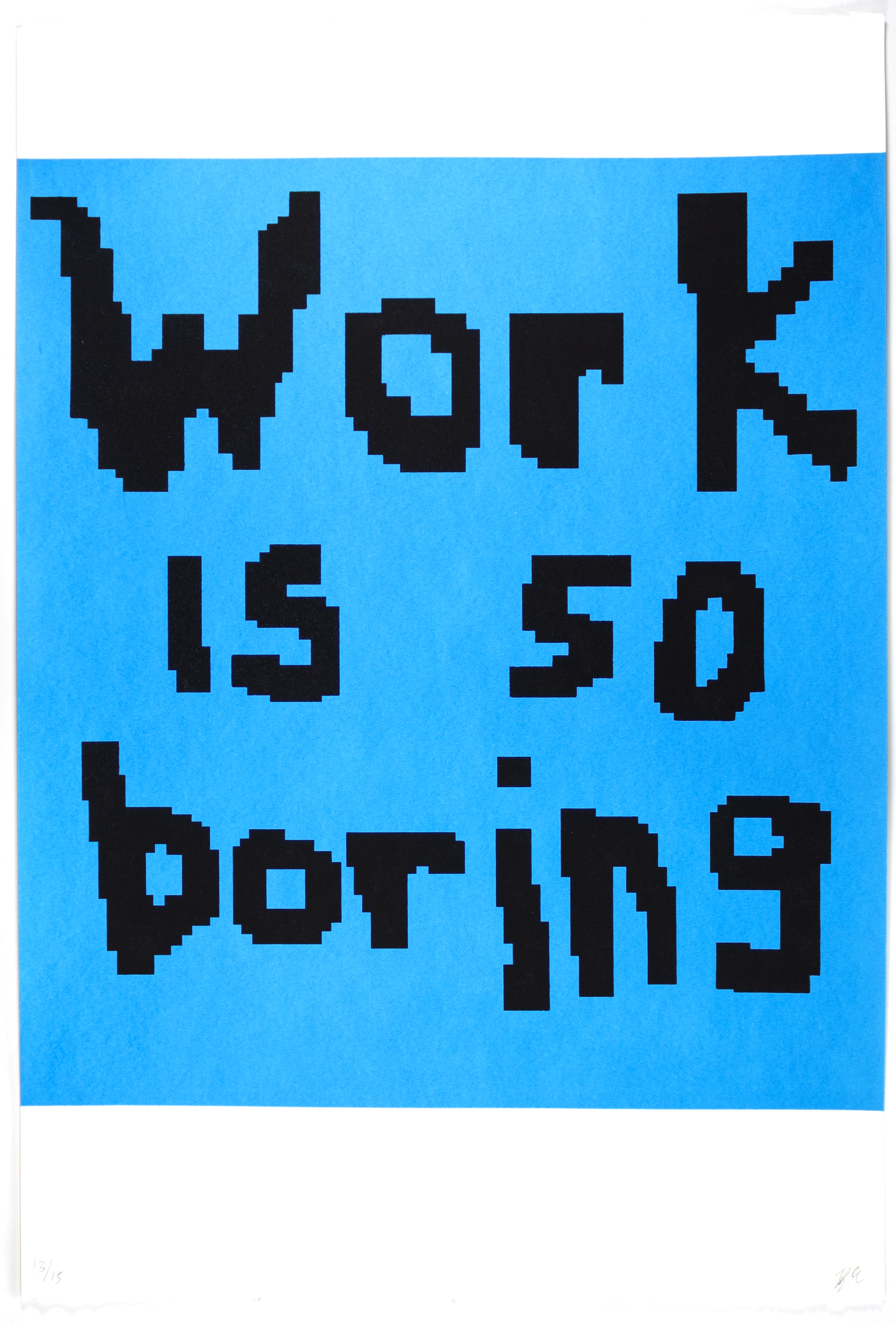
Ben Garbus, Exactly What it Says, 2018.
EP: How has printmaking influenced other parts of your art practice?
BG: For me, printmaking has established a process of experimentation that’s been relevant to many other things. Patience and deference for structure is a lesson I learned from printmaking, but also knowing when to break free of that. That said, I’ve been trying to make printmaking less about how elaborate its process is, so I’ve been making these one-colored prints to make them as simple as possible while still being prints. I want my work to be concise both materially and conceptually.
EP: What do you think is the most important thing you learned as a fellow at Spudnik?
BG: Being a fellow was a really positive experience. It was a great opportunity to work on an artist talk, because I hadn’t done a public talk like that before. I learned how to take myself more seriously, which can be a challenge. To get artist opportunities you really have to seem like you believe in yourself, which Spudnik helped me with. It was valuable to have Marcela, Spudnik’s Program Director, around to nudge me along. It’s great to have other people keep you on track with making things. It can get exhausting when it’s all on your own.
EP: What are some recent, upcoming, or current projects you are working on?
BG: My most recent obsession is drawing varsity lettering. That’s the kind of American visual culture I’m interested in.
EP: Now for a fun question, what was the last song you listened to?
BG: In the car on the way over I was listening to Kuff by Shelley Thunder.
If you want to find out more about Ben and his work you can visit his website or follow gwiebus on Instagram.
